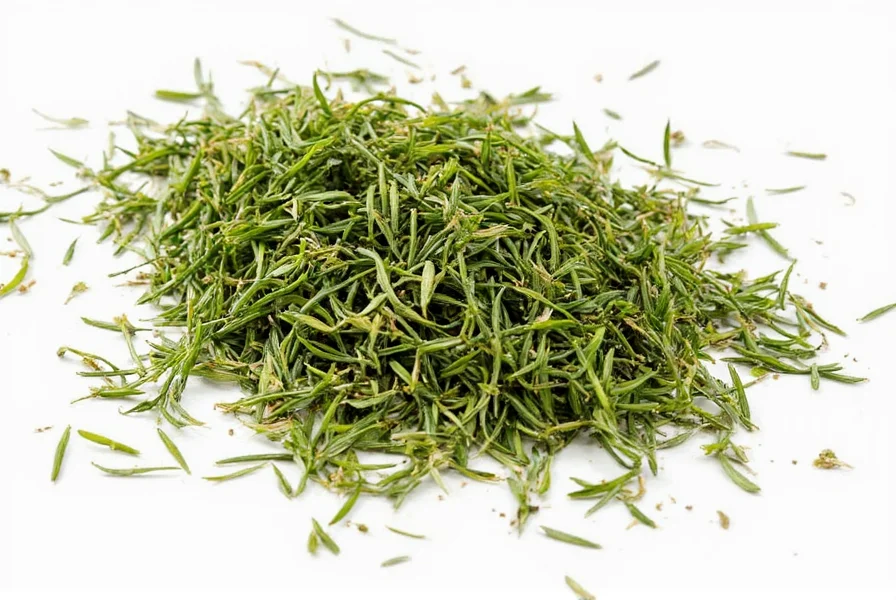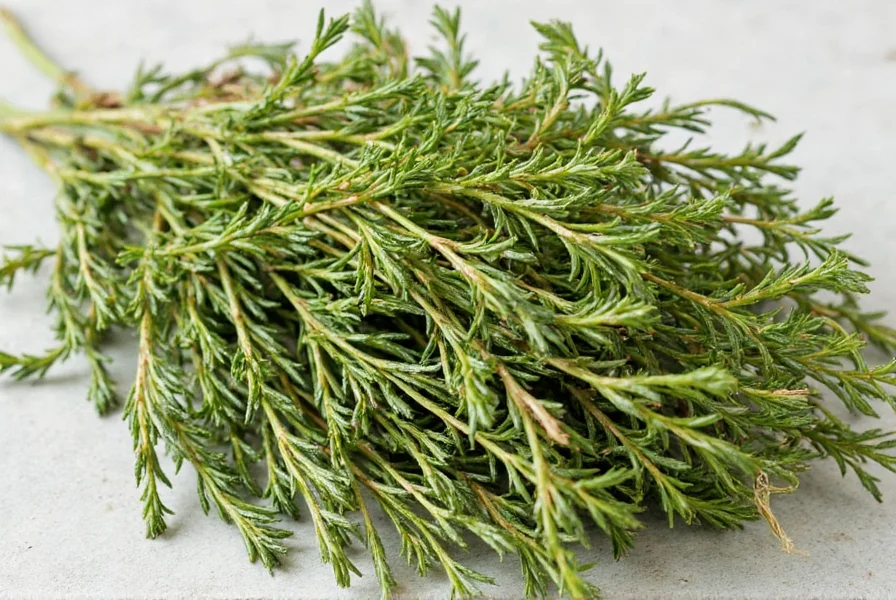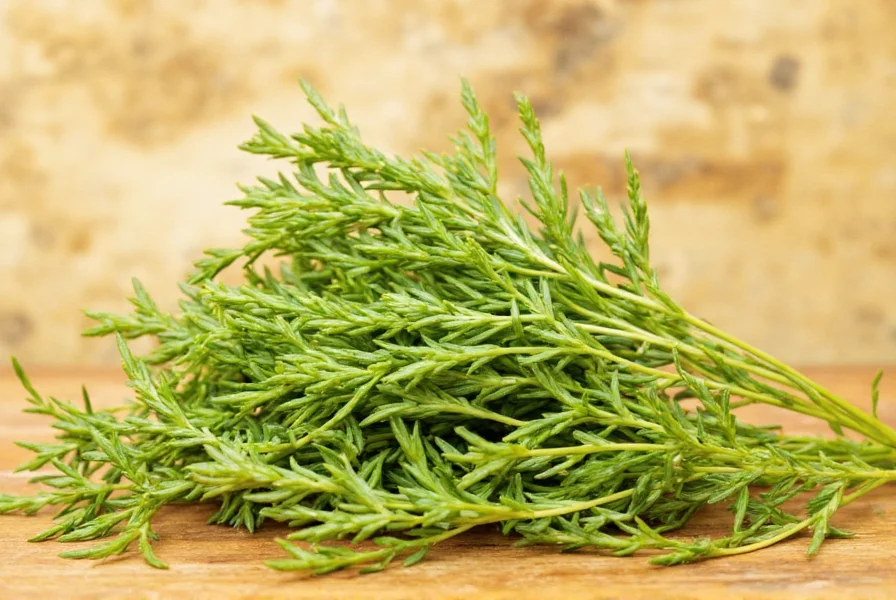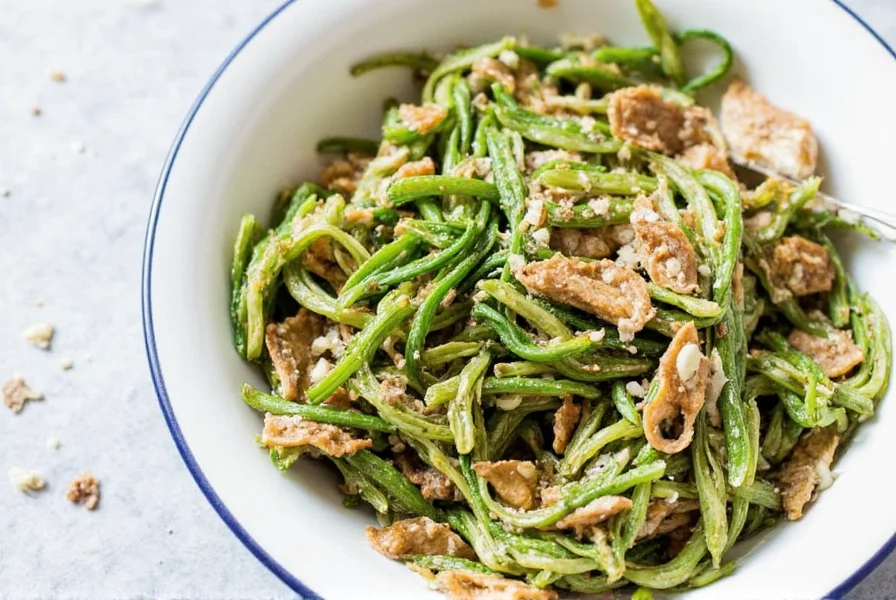If you've ever tasted a classic béarnaise sauce or savored the subtle herbal kick in a traditional Russian soup, you've likely encountered the unique charm of dried tarragon. Often overlooked in spice racks across the world, this unassuming herb is a powerhouse of flavor and versatility.

In this article, we'll explore everything you need to know about using, buying, and loving dried tarragon — whether you're a seasoned chef or a curious home cook.
What is Dried Tarragon?
Tarragon, known botanically as Artemisia dracunculus, comes in two main varieties: French (true) tarragon and Russian (common) tarragon. When dried properly, especially the French kind, it retains much of its signature anise-like flavor and aromatic depth.
The drying process concentrates the herb's natural oils, making dried tarragon a potent addition to slow-cooked dishes, sauces, marinades, and even some baked goods.
Flavor Profile & Aroma
Dried tarragon boasts a complex flavor profile:
- Bitter-sweet notes reminiscent of licorice or anise
- Earthy undertones with a slight floral hint
- Mild peppery finish

Its aroma is equally intriguing — think fresh-cut grass mixed with a whisper of fennel. Compared to other dried herbs like thyme or oregano, tarragon offers a more delicate and nuanced punch.
5 Practical Cooking Tips with Dried Tarragon
- Add early in cooking: Since it's dried, let it bloom in fats or liquids early on for maximum flavor extraction.
- Use sparingly: A little goes a long way. Start with half the amount you think you'll need.
- Infuse oils or vinegars: Create custom bases by steeping dried tarragon in olive oil or white wine vinegar.
- Pair with dairy: It plays beautifully with cream-based sauces, sour cream dips, and cheese-based fillings.
- Avoid overcooking: While it can handle long simmering, avoid high heat or prolonged roasting which may burn off volatile oils.
Fresh vs. Dried Tarragon: The Ultimate Showdown
While fresh tarragon has a brighter, more aromatic presence, it doesn't always stand up well to long cooking times. Here's how they compare:
| Feature | Fresh Tarragon | Dried Tarragon |
|---|---|---|
| Flavor Intensity | Mild to moderate | Strong and concentrated |
| Best For | Garnishes, dressings, cold dishes | Cooked sauces, stews, marinades |
| Shelf Life | 2–4 weeks refrigerated | 1–3 years sealed |
| Storage Needs | Refrigeration preferred | Dark, dry cupboard |

Your Essential Buying Guide to Dried Tarragon
Not all dried tarragon is created equal. Here's what to look for when shopping for top-tier quality:
- French tarragon label: Always opt for Artemisia dracunculus — the real deal.
- Packaging: Choose vacuum-sealed bags or dark glass jars that protect against light and air exposure.
- Color: Vibrant green indicates freshness; faded green or brownish hues suggest age or poor storage.
- Smell test: Even dried, it should have a sharp, clean, slightly sweet aroma.
- Brand reputation: Trusted names include Penzeys, Simply Organic, and The Spice Garden Co.
Recommended Products
| Product | Features | Advantages | Best For | Occasion |
|---|---|---|---|---|
| Penzeys Dried French Tarragon | Pure, hand-selected leaves from France | Exceptional flavor concentration, consistent quality | Classic sauces and gourmet dishes | Special meals, gifting |
| Simply Organic Tarragon | USDA Organic certified, sustainably grown | Eco-friendly packaging, reliable taste | Weeknight dinners, pantry staples | Everyday use |
| The Spice Garden Co. Bulk Tarragon | Coarsely cut leaves, ideal for infusions | Affordable, customizable portion sizes | Oil infusions, pickling, batch cooking | Large-scale cooking, preserving |

Tarragon Pairings: What Goes Best with This Herb?
Tarragon plays well with a variety of ingredients. Here are some tried-and-true pairings:
- Chicken: Especially in creamy sauces or lemon-herb rubs
- Eggs: Think deviled eggs or shakshuka upgrades
- Vinegar: Classic match for homemade vinaigrettes and salad dressings
- Tomatoes: Adds complexity to tomato-based soups and stews
- Fish: Works beautifully with mild white fish and seafood dishes

3 Must-Try Recipes Featuring Dried Tarragon
1. Creamy Tarragon Chicken Pasta
A dreamy blend of heavy cream, garlic, and tarragon stirred into tender pasta noodles.
- Serve with a sprinkle of Parmesan and a dash of lemon zest
- Ready in under 30 minutes
2. Lemon-Tarragon Vinaigrette
Whisk together olive oil, lemon juice, Dijon mustard, honey, and a pinch of dried tarragon for a zesty dressing.
- Ideal for leafy greens or grain bowls
- Stores well in the fridge for up to a week
3. Tarragon Pickled Vegetables
Create quick pickles by adding dried tarragon to your brine mixture before pouring over sliced cucumbers, carrots, or radishes.
- Perfect for charcuterie boards
- Can be customized with other spices like dill or mustard seeds

Frequently Asked Questions About Dried Tarragon
Can I substitute dried tarragon for fresh tarragon in recipes?
Yes, you can substitute dried tarragon for fresh, but with some important considerations. Dried tarragon is more concentrated in flavor, so you'll need to use less. As a general rule, use one-third the amount of dried tarragon compared to fresh. Dried tarragon works best in cooked dishes where it has time to rehydrate and release its flavors, while fresh tarragon is better for garnishes and cold preparations where its bright flavor can shine.
How much dried tarragon should I use compared to fresh?
The standard conversion is 1 teaspoon of dried tarragon for every 1 tablespoon of fresh tarragon. Since drying concentrates the flavors, you need less dried herb to achieve a similar flavor intensity. Always start with less than you think you need - dried tarragon's flavor can be quite potent, and it's easier to add more than to fix an overpowered dish.
What are the health benefits of dried tarragon?
Dried tarragon contains several beneficial compounds including antioxidants, vitamins (particularly vitamin A and some B vitamins), and minerals like iron and calcium. It has traditionally been used to aid digestion, reduce inflammation, and may have antimicrobial properties. Like most herbs, it's low in calories but adds significant flavor without salt or fat, making it a healthy addition to many dishes.
Why does my dried tarragon taste bitter?
Bitterness in dried tarragon usually comes from one of three issues: 1) Using too much (it's potent!), 2) Old or improperly stored tarragon that has degraded, or 3) Adding it too late in the cooking process when the volatile oils haven't had time to mellow. To avoid bitterness, always use sparingly, check your tarragon's freshness (it should have a sweet, anise-like aroma), and add it early enough in cooking to allow the flavors to integrate properly.
Can dried tarragon go bad?
While dried tarragon won't 'go bad' in the sense of becoming unsafe to eat, it will lose its flavor and potency over time. Properly stored in an airtight container away from light and moisture, dried tarragon maintains good flavor for 1-3 years. Signs it's past its prime include faded color (from vibrant green to brownish), weak or absent aroma, and diminished flavor impact in dishes. It's always best to replace dried herbs when they've lost their potency for the best culinary results.
What are the best dishes to use dried tarragon in?
Dried tarragon shines in slow-cooked dishes where its flavor can fully develop, including: creamy sauces (like béarnaise or aioli), chicken and fish dishes, vegetable pickles, vinaigrettes, egg salads, and certain soups and stews. It works particularly well with dairy, vinegar, lemon, and mild-flavored proteins. Avoid using it in dishes that require high, direct heat for long periods, as this can cause the delicate flavors to burn off.
How to Store Dried Tarragon Like a Pro
To preserve flavor and potency, store dried tarragon in airtight containers away from direct sunlight and moisture. Here's a handy guide:
- Air-tight glass jars: Best for long-term storage
- Labeling: Mark the purchase date to track freshness
- Avoid humidity: Keep it away from the stove or sink area
- Check annually: If the color fades or the smell weakens, it's time to replace it

Conclusion
Dried tarragon may not shout from the spice rack like chili flakes or paprika, but it quietly transforms dishes with elegance and finesse. Whether you're simmering a velvety sauce or whipping up a quick salad dressing, this often-overlooked herb deserves a place of honor in your pantry.
So next time you're reaching for basil or thyme, give dried tarragon a chance to shine — your taste buds will thank you.











 浙公网安备
33010002000092号
浙公网安备
33010002000092号 浙B2-20120091-4
浙B2-20120091-4